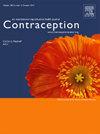堕胎寻求者未回答的问题:受影响社区(RPAC)协议在加利福尼亚中央山谷的应用研究优先级。
IF 2.3
2区 医学
Q1 OBSTETRICS & GYNECOLOGY
引用次数: 0
摘要
目的:尽管加州提供了保护措施,但在服务不足的地区,包括中央山谷,人们对堕胎的了解有限。此外,社区参与,特别是直接受影响的社区参与,在制定堕胎护理的研究优先事项方面的参与有限。我们利用受影响社区研究优先级(RPAC)协议来确定未来堕胎相关研究的研究优先主题和研究问题。研究设计:本项目是通过社区生殖司法组织与学术和社区研究人员之间的伙伴关系设计和实施的。我们招募了年龄≥18岁、说英语或西班牙语、曾在加州中部接受过堕胎护理的个体。在两次RPAC会议上,参与者分享了他们对堕胎护理的不确定性(第一次会议),并对他们未回答的问题进行了排序(第二次会议)。两次会议的录音都被转录并使用快速定性分析来确定主题。结果:参与者(n=7)提出了79个独特的问题,其中57个被认为没有答案,并分为11个优先主题。问题最多的主题包括与护理相关的成本(n=9);社区的作用;与临床医生的互动;患者资源(每个主题n=7)。与会者讨论了具有挑战性的经历,障碍,以及在接受堕胎护理时社会支持的重要性。结论:采用以社区为中心的方法,我们确定了未来堕胎相关研究的主题和问题;这些可以指导研究人员和资助者。参与者提出的许多问题已经在先前的研究中得到了回答,这表明研究的含义并没有清楚地传达给受影响最大的人。含义:采用以社区为中心的方法,本研究召集了以前在加利福尼亚中央山谷接受堕胎护理的个体,以确定未来堕胎相关研究的关键研究优先主题和问题。优先主题和问题列表是研究人员,倡导团体和资助者的指南。本文章由计算机程序翻译,如有差异,请以英文原文为准。
Unanswered questions from abortion seekers: An application of the Research Prioritization by the Affected Community (RPAC) protocol in the Central Valley, California
Objectives
Despite protections offered in California, there is limited understanding of abortion access in underserved regions, including the Central Valley. Furthermore, there has been limited community involvement, especially from those directly affected, in the development of research priorities in abortion care. We utilized the Research Prioritization of Affected Communities protocol to identify research priority topics and research questions for future abortion-related research.
Study design
This project was designed and implemented through a partnership between a community-based reproductive justice organization and academic and community researchers. We recruited individuals ≥18 years old, English or Spanish speaking, who previously accessed abortion care in Central California. Over two Research Prioritization of Affected Communities sessions, participants shared uncertainties about the abortion care they received (session 1) and ranked their unanswered questions (session 2). The audio recording of sessions were transcribed and analyzed using rapid qualitative analysis to identify themes.
Results
Participants (n = 7) raised 79 unique questions, 57 of which were deemed unanswered and categorized into 11 prioritized topics. Topics with the most questions included costs associated with care (n = 9); the role of community; interactions with clinicians; and resources for patients (n = 7 for each topic). Participants discussed challenging experiences, barriers, and the importance of social support when receiving abortion care.
Conclusions
Using a community-centered approach, we identified topics and questions for future abortion-related research, to guide researchers and funders. Many questions raised by participants have already been answered in prior research, suggesting that implications of research are not clearly conveyed to those impacted the most.
Implications
Using a community-centered approach, this study convened individuals who previously received abortion care in the Central Valley of California to identify key research priority topics and questions for future abortion-related research. The list of prioritized topics and questions is a guide for researchers, advocacy groups, and funders.
求助全文
通过发布文献求助,成功后即可免费获取论文全文。
去求助
来源期刊

Contraception
医学-妇产科学
CiteScore
4.70
自引率
17.20%
发文量
211
审稿时长
69 days
期刊介绍:
Contraception has an open access mirror journal Contraception: X, sharing the same aims and scope, editorial team, submission system and rigorous peer review.
The journal Contraception wishes to advance reproductive health through the rapid publication of the best and most interesting new scholarship regarding contraception and related fields such as abortion. The journal welcomes manuscripts from investigators working in the laboratory, clinical and social sciences, as well as public health and health professions education.
 求助内容:
求助内容: 应助结果提醒方式:
应助结果提醒方式:


